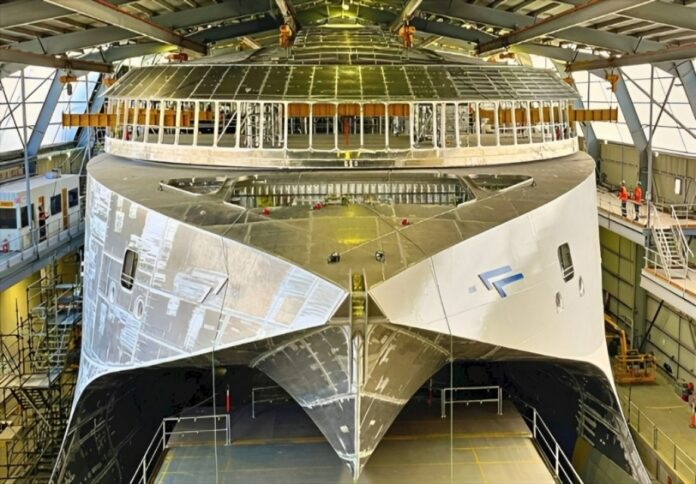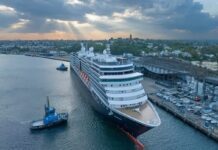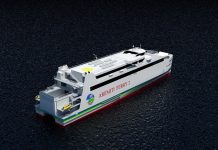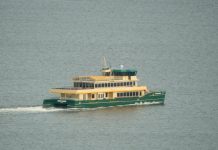
The construction of Incat Hull 096 achieved a major milestone with the successful placement of the final passenger deck module, marking the structural completion of what is claimed to become the world’s largest electric ferry.
The front superstructure, described as the largest and most technically challenging module ever lifted by Incat, was installed in a precise and complex operation.
This step brings the Tasmanian shipbuilder closer to the launch of the groundbreaking vessel, the company said in a news release.
“This achievement represents more than just the physical completion of the structure – it’s a testament to the innovation, expertise, and vision that define Incat’s leadership in the maritime industry,” said Stephen Casey, CEO of Incat.
At 130 meters long, Hull 096 is designed to carry 2,100 passengers and 225 vehicles, setting a new global standard for sustainable maritime transportation.
According to the company, with the vessel’s structure now complete, attention turns to the internal fit-out phase.
Skilled teams have already begun work on outfitting passenger amenities, including a duty-free shopping deck spanning over 2,300 square metres.
The next critical phase will see the arrival of major machinery at the shipyard, furthering the development of this advanced vessel, which is scheduled for delivery in late 2025.
Incat Chairman Robert Clifford commented on the company’s future plans: “While the industry anticipates the launch of Hull 096 next year, Incat is planning for the future and undergoing a significant expansion to ensure we can build many more electric ferries to meet the growing demand.”
“Incat will be the shipyard of choice for major ferry operators seeking lightweight, environmentally friendly vessels, and we have the vision and shipbuilding expertise to lead the world in this space,” Clifford added.



















